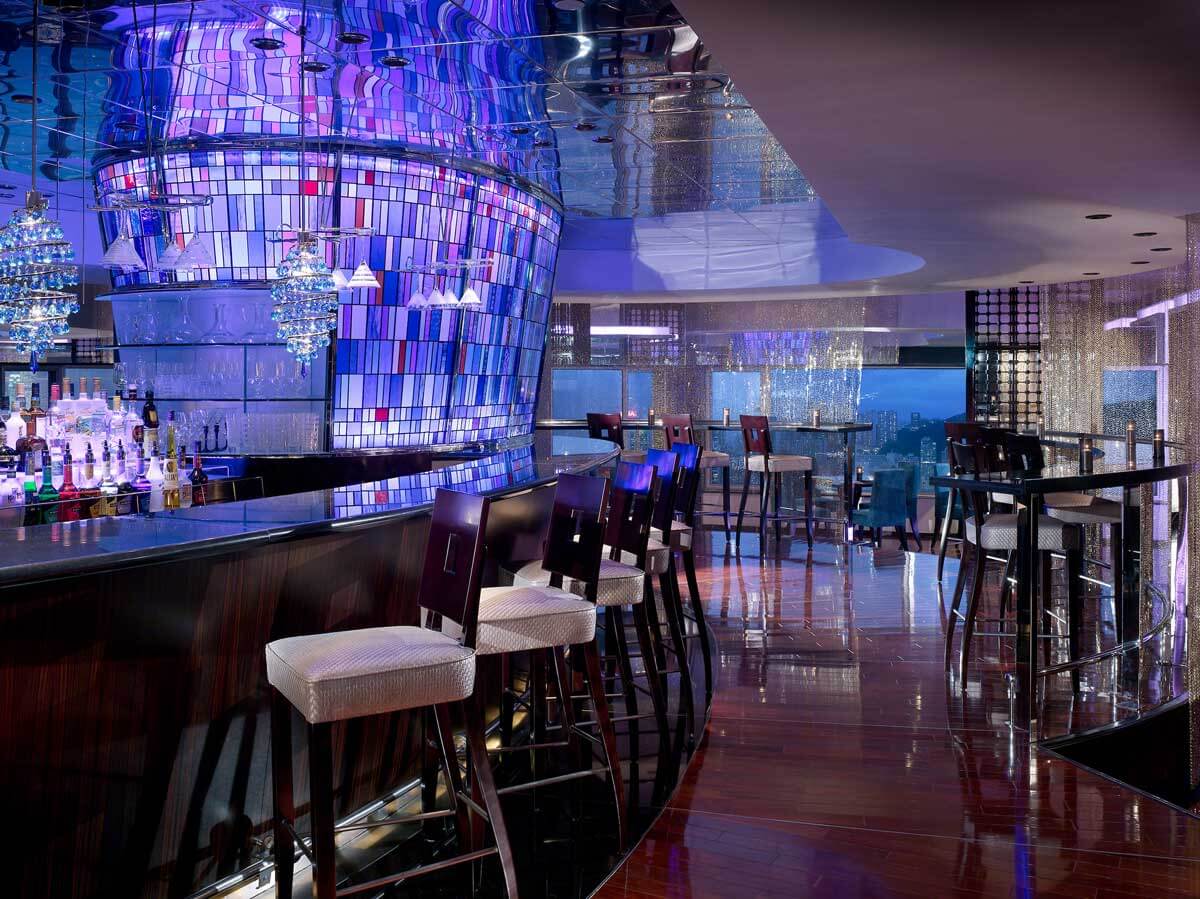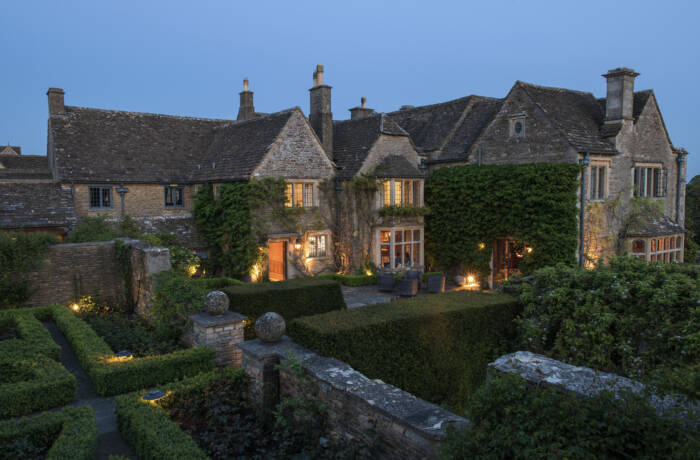
The Excelsior is a cathedral to modern tourism and business travel
Luxury hotels are not all about marble bathrooms and art in the corridors: without perfect service and functionality, a luxury hotel is not worth the title. Darius Sanai holds up Mandarin Oriental’s Hong Kong behemoth as a case study – technically, it’s not a luxury hotel, but the experience should be an example for all hoteliers on how it’s done.
The idea of staying at a Mandarin Oriental hotel conjures up a dreamy vision, a blend of eastern exoticism and richness of service. And this dream is generally an accurate predictor of what you’ll receive in the only luxury city hotel group that, for me, perfectly combines the style and individuality of a boutique private resort group with the functionality of a major luxury chain.
‘Functionality’ is probably not a word that appears in Mandarin’s, or any group’s staff manual, but it’s a key element of a top hotel and one that is overlooked too easily. I have stayed in boutique hotels whose bar staff don’t know what a cigar cutter is; design hotels where room service breakfast looks like something on a second-class train carriage; style hotels where the concierge forgets your restaurant reservation and today’s front office staff have no idea about the detailed conversation you had about your needs with yesterday’s front office staff. An adaptor for your European plug? Sorry, the guest who borrowed it last week didn’t bring ours back.
Follow LUX on Instagram: the.official.lux.magazine
I’m ok with having an orange sofa in the shape of a banana in my room; I’m delighted to find an oxygen machine and green juice in my minibar, it’s fine that the person showing me to my room is an easy-on-the-eye Instagram star, but when I travel, and I suspect I speak for a fair number of LUX readers here, what I need is functionality.
This is different to being able to process eccentric requests, or to having a fleet of Teslas to show your green credentials. Functionality is boring, and it makes the world go round. If I call on my way in from the airport and order dim sum in my room at precisely 6.30pm that night, it needs to be there; I don’t need to have to call at 6.45pm to be told, oh sorry, there’s no dim sum today, would you like anything else from the room service menu? The adaptor – already in the socket. Housekeeping needs to speak English and know the answer to a question about dry cleaning delicates without promising to call me back – I’m talking to you now, I don’t need to talk to you again. Room service should remember my breakfast order from yesterday so I don’t need ask all over again about gluten-free toast and no lemon in the water and do you have any sliced grapefruit, no, not juice, sliced actual grapefruit. The person who answers the ‘At Your Service’ function on the phone really does need to know everything about the hotel – it’s not at my service if you have to be a broker between me and the rest of the hotel.
Read next: Searching for serenity in the Nepalese Himalayas
Staff need, in general, to know not just about what you are asking them, but every element of the hotel, so the host in the French restaurant on Floor 2 is clued-in that you have a car for the airport at 9.30pm and the staff there already know to serve dinner in time, while the concierge has already had the bell boy pick up your bags (and return the adaptor to reception so they don’t add a charge to your bill).
Which brings me back to Mandarin Oriental hotels. All the ones I have stayed at, from Hong Kong to New York, score high marks in this kind of functionality. Not unusual – a minimum requirement for a luxury hotel, and one which is shared by competitors like Four Seasons and Ritz Carlton.
There is a hotel that appears in the Mandarin Oriental portfolio, though, that doesn’t bear the brand name. The Excelsior in Hong Kong is part of the group, but not; it’s just called The Excelsior, and doesn’t share the luxury status or accoutrements of its more illustrious sisters. It’s a good bit cheaper, as well.

A Deluxe Double Room at The Excelsior
I have just bid The Excelsior farewell for the last time. I had a three-year advisory contract with a Hong Kong-based client, whose company booked me into the Excelsior for all of my four-to-six-time-a-year stays. Having, on previous trips to Hong Kong, stayed at the Mandarin Oriental, its sister hotel the Landmark, and other luxury citadels like the Four Seasons and Upper House, I have found myself staying in The Excelsior for something like 15 times over the last three years, for nearly a week at a time; that’s more than 90 nights, enough to get to know a place, or get weary of it.
The sole sub-luxury hotel of my global itineraries for LUX, my luxury consultancy Quartet Consulting, and my other employer Condé Nast, the 848-room monolith, at the ‘wrong end’ of Hong Kong to the financial bustle of Central, with its plethora of groups from mainland China, should have stood out as a step down, a place to be endured, perhaps even complained about to my client. One colleague did complain: a creative director who travelled with me once took one look and instantly changed addresses to a boutique hotel, which turned out to have paper-thin walls and chaotic service, but which had Tom Dixon light fittings.
Read next: Fine artist and model, Orla Carolin on modelling’s need for greater equality
The Excelsior is a cathedral to modern tourism and business travel. Thousands seem to flow through its two facades every day. Its rooms are homage to the era when hotel rooms weren’t really designed; the bathroom’s on your right (with a shower in the bath), the safe’s in the cupboard on your left, the desk is in front if you, and the bed’s over there. To walk into my room (2422, usually) after the 12 hour flight from London should have been to be hit with a wave of mundane gloom: my functional home for the next six days.
But I rather loved the Excelsior. My room, like most others (I never received special treatment there) looked out over the harbour to Kowloon, and past to the mountains in China, with that spectacular and unique mix of commerciality, romance, urban ugliness, urban beauty, noise, light and possibility that Hong Kong epitomises.
My flight would touch down at 5pm on a Sunday night, and, arriving at the hotel around 7, I would get changed (a shower in a bath is fine) and walk outside into the neon-lit streets. The crazy signs and lights of the Laforet stall, the crowds of shoppers at any hour, the shops on the Lockhart road selling Chinese roots and beauty products and barbecued chicken and technicolour drinks; these were an instant hit of Hong Kong, unlike anything you will receive in the sanitised central business area a mile or so away.
I would then walk back to hotel for dinner at Yee Tung Heen, the Cantonese restaurant on the second floor. A formal, sophisticated, old-fashioned place with white glove service and tablecloths and a vast menu of traditional Cantonese dishes, it is apparently a favourite place for a treat for local families – and appears absolutely nowhere on the fashionable tourism agenda. Bare sharing tables, fusion offerings, Cantonese cocktails – all are on offer elsewhere in Hong Kong, but Yee Tung Heen has extreme comfort, peace, an excellent wine list, and superb food. From the boiled peanuts which I dipped into the homemade XO sauce as a pre-starter, to the steamed garoupa with ginger and lime, to the citadel of Chinese mushrooms, this was the best food I had in three years of being shuttled around Michelin-starred restaurants in Hong Kong.

ToTT’s bar has the best views of Hong Kong from the roof terrace
After dinner, jet lagged, knowing this would be my only night “in” during my stay, I’d ask for the rest of the bottle of Riesling to meet me at the rooftop bar, ToTT’s. It inevitably got there before I did, a table would be waiting and I would sip a glass and marvel at the best view of Hong Kong from anywhere: 34th floor, with a precipitous view of both the city and Kowloon across the water, and the canyon of lights leading away through anonymous forests of blocks into the eastern distance.
“Room Service, Wendy speaking, how can I help you Mr Sanai, would you like the same as usual?” – how did Wendy remember, or care, among 848 rooms, with my several week period of absence each time, about the jug of American coffee, empty bowl with spoon, sliced apple and orange, and Welsh sparkling water (not the revolting San Pellegrino)? How did the entire concierge and front desk staff always know exactly when my limo for the return to the airport was booked? How did it all link up in such a vast hotel with its streams of bemused and voluble first-time tourists?
My theory, though I can’t be sure, is that the Excelsior is a kind of test-bed for Mandarin Oriental’s staff: if they can operate at peak standard at the Excelsior, they can do it anywhere.
It’s a rare anomaly of a hotel where the service is super-luxury and the rooms are barely above three-star (a recent refurbishment stripped them of their most attractive element, 1990s-retro oak panelling and desks that ran the length of the walls, replacing them with forgettable florals and whites). And I’ll take it that way anytime. The Excelsior may never be a LUX Hotel of the Month – not unless it is knocked down and rebuilt, as the old Intourist in Moscow gave way to the new Ritz Carlton – but every luxury hotelier should pay a visit to see how hotels ought to operate.








